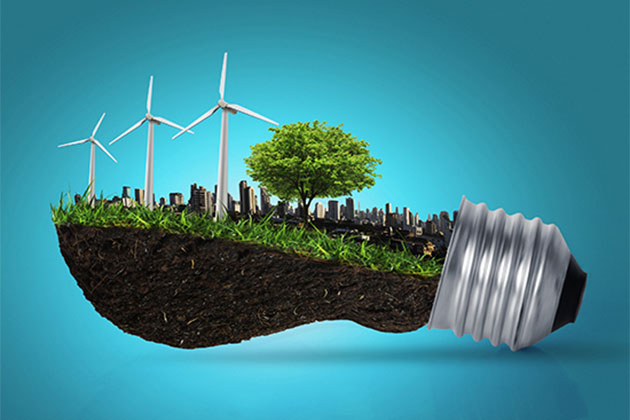Scientists have shown a new technology in which bioengineered bacteria can make cost-effective chemicals/polymers from renewable ພືດ ແຫຼ່ງຂໍ້ມູນ
ລິກະນິນະ is a material which is a constituent of cell wall of all dry land plants. It is the second most abundant natural polymer after cellulose. This material is the only polymer found in plants which is not composed of carbohydrate (້ໍາຕານ) monomers. Lignocellulose biopolymers provide shape, stability, strength and rigidity to plants. Lignocellulose biopolymers consist of three main components: cellulose and hemicellulose form a framework in which lignin is incorporated as a kind of connector thus solidifying the cell wall. Cell wall lignification makes plants resistant to wind and pests and helps them from rotting. Lignin is a vast but very underutilized renewable resource of energy. Lignin which represents up to 30 percent of the lignocellulose biomass is an unexploited treasure – at least from a chemical point of view. The chemical industry depends mostly on carbon compounds for creating different products like paint, artificial fibres, fertilizers and most importantly plastic. This industry does use some renewable resources like vegetable oil, starch, cellulose etc but this comprises only 13 percent of all compounds.
Lignin, ເປັນທາງເລືອກທີ່ດີກັບນໍ້າມັນສໍາລັບການຜະລິດຜະລິດຕະພັນ
In fact, lignin is the one and only source of renewable on earth that contains a large number of aromatic compounds. This is of importance because aromatic compounds are generally extracted from the non-renewable source petroleum and then are used to produce ພລາສຕິກ, paints etc. Thus, the potential of lignin is very high. In comparison to petroleum which is a non-renewable fossil fuel, lignocelluloses are derived from ໄມ້, straw or Miscanthus which are renewable sources. Lignin can be grown in fields and forests and are generally neutral towards the climate. Lignocelluloses is being considered as a serious alternative to petroleum in past few decades. Petroleum drives the chemical industry at present. Petroleum is a raw material for many basic chemicals which are then used to produce useful products. But petroleum is non-renewable source and is dwindling, therefore focus needs to be on finding renewable sources. This brings lignin into the picture as appears to be a very promising alternative.
Lignin ແມ່ນເຕັມໄປດ້ວຍພະລັງງານສູງແຕ່ການດຶງເອົາພະລັງງານນີ້ແມ່ນສັບສົນແລະຂະບວນການລາຄາແພງແລະດັ່ງນັ້ນເຖິງແມ່ນວ່າຊີວະວິທະຍາທີ່ຜະລິດຜົນສຸດທ້າຍແມ່ນມີຄ່າໃຊ້ຈ່າຍສູງຫຼາຍແລະບໍ່ສາມາດທົດແທນ "ພະລັງງານການຂົນສົ່ງ" ທີ່ໃຊ້ໃນຂະນະນີ້. ວິທີການຈໍານວນຫຼາຍໄດ້ຖືກຄົ້ນຄວ້າສໍາລັບການພັດທະນາວິທີການປະສິດທິພາບຄ່າໃຊ້ຈ່າຍໃນການທໍາລາຍ lignin ແລະປ່ຽນເປັນສານເຄມີທີ່ມີຄຸນຄ່າ. ແນວໃດກໍ່ຕາມ, ຂໍ້ຈໍາກັດຈໍານວນຫນຶ່ງໄດ້ຈໍາກັດການແປງຂອງພືດສໍາຜັດເຊັ່ນ: lignin ເພື່ອຖືກນໍາໃຊ້ເປັນແຫຼ່ງພະລັງງານທາງເລືອກຫຼືແມ້ກະທັ້ງພະຍາຍາມເຮັດໃຫ້ມັນມີລາຄາຖືກກວ່າ. ການສຶກສາທີ່ຜ່ານມາໄດ້ປະສົບຜົນສໍາເລັດວິສະວະກໍາເຊື້ອແບັກທີເຣັຍ (E. Coli) ເຂົ້າໃນການທໍາຫນ້າທີ່ເປັນໂຮງງານຜະລິດເຊນແປງຊີວະພາບທີ່ມີປະສິດທິພາບແລະມີປະສິດຕິຜົນ. ເຊື້ອແບັກທີເຣັຍ ການຂະຫຍາຍຕົວແລະຫຼາຍໄວຫຼາຍແລະພວກເຂົາສາມາດທົນທານຕໍ່ຂະບວນການອຸດສາຫະກໍາທີ່ຮຸນແຮງ. ຂໍ້ມູນນີ້ໄດ້ຖືກລວມເຂົ້າກັບຄວາມເຂົ້າໃຈຂອງສານ degraders lignin ທີ່ມີຢູ່ໃນທໍາມະຊາດ. ວຽກງານດັ່ງກ່າວໄດ້ຖືກຈັດພີມມາຢູ່ໃນ ການດໍາເນີນຄະດີຂອງສະຖາບັນວິທະຍາສາດແຫ່ງຊາດສະຫະລັດ.
The team of researchers led by Dr Seema Singh at the Sandia National Laboratories solved three main problems that are encountered in turning lignin into platform chemicals. The first major hurdle is that ເຊື້ອແບັກທີເຣັຍ E.Coli generally does not produce the enzymes which are needed for conversion. Scientists tend to solve this problem of making enzymes by adding an “inducer” to the fermentation ring. These inducers are effective but are very expensive and thus do not fit well in the concept of biorefineries. Researchers tried a concept wherein a lignin derived compound like vanilla was used as a substrate as well as an inducer by engineering the ເຊື້ອແບັກທີເຣັຍ E.Coli. This would bypass the need for an expensive inducer. Though, as the group discovered, vanilla wasn’t a good choice particularly because once lignin breaks down, vanilla is produced in large quantities and it starts inhibiting the function of E.Coli i.e. vanilla starts creating toxicity. But this worked in their favour when they engineered the ເຊື້ອແບັກທີເຣັຍ. In the new scenario, the very chemical that is toxic to the E.Coli is used to initiate the complex process of “lignin valorisation”. Once vanilla is present, it activates the enzymes and bacteria starts to convert vanillin into catechol, which is the desired chemical. Also, the amount of vanillin never reaches the toxic level as it gets autoregulated in the current system. The third and final problem was of the efficiency. The system of conversion was slow and passive thus researchers looked into more effective transporters from other bacteria and engineered them into E. Coli which then fast tracked the process. Overcoming toxicity and efficiency problems by such innovative solutions can help make the production of biofuel a more economical process. And, removal of an external inducer along with incorporation of auto-regulation can further optimize the biofuel-making process.
ມັນໄດ້ຖືກສ້າງຕັ້ງຂຶ້ນຢ່າງດີວ່າເມື່ອ lignin ຖືກແຍກອອກ, ມັນມີຄວາມສາມາດໃນການສະຫນອງຫຼືແທນທີ່ຈະ "ມອບໃຫ້" ສານເຄມີແພລະຕະຟອມທີ່ມີຄຸນຄ່າເຊິ່ງຫຼັງຈາກນັ້ນສາມາດປ່ຽນເປັນໄນລອນ, ພາດສະຕິກ, ຢາແລະຜະລິດຕະພັນທີ່ສໍາຄັນອື່ນໆທີ່ປະຈຸບັນໄດ້ມາຈາກນໍ້າມັນ, ບໍ່ແມ່ນ. - ແຫຼ່ງພະລັງງານທົດແທນ. ການສຶກສານີ້ແມ່ນມີຄວາມກ່ຽວຂ້ອງໃນການເປັນບາດກ້າວໄປສູ່ການຄົ້ນຄວ້າແລະການພັດທະນາການແກ້ໄຂຄ່າໃຊ້ຈ່າຍທີ່ມີປະສິດທິພາບສໍາລັບຊີວະພາບແລະການຜະລິດຊີວະພາບ. ການນໍາໃຊ້ເຕັກໂນໂລຊີ bioengineering ພວກເຮົາສາມາດຜະລິດປະລິມານຂະຫນາດໃຫຍ່ຂອງສານເຄມີເວທີແລະຜະລິດຕະພັນສຸດທ້າຍອື່ນໆຈໍານວນຫຼາຍ, ບໍ່ພຽງແຕ່ມີເຊື້ອແບັກທີເຣັຍ E.Coli ແຕ່ຍັງເປັນເຈົ້າພາບຈຸລິນຊີອື່ນໆ. ການຄົ້ນຄວ້າໃນອະນາຄົດຂອງຜູ້ຂຽນຈະສຸມໃສ່ການສະແດງໃຫ້ເຫັນການຜະລິດເສດຖະກິດຂອງຜະລິດຕະພັນເຫຼົ່ານີ້. ການຄົ້ນຄວ້ານີ້ມີຜົນກະທົບອັນໃຫຍ່ຫຼວງຕໍ່ຂະບວນການຜະລິດພະລັງງານແລະການຂະຫຍາຍຂອບເຂດຂອງຄວາມເປັນໄປໄດ້ສໍາລັບຜະລິດຕະພັນສີຂຽວ. ຜູ້ຂຽນໃຫ້ຂໍ້ສັງເກດວ່າໃນອະນາຄົດອັນໃກ້ນີ້ lignocellulose ຄວນຕື່ມຂໍ້ມູນໃສ່ນໍ້າມັນແນ່ນອນຖ້າບໍ່ທົດແທນມັນ.
***
{ທ່ານສາມາດອ່ານເອກະສານການຄົ້ນຄວ້າຕົ້ນສະບັບໄດ້ໂດຍການຄລິກທີ່ລິ້ງ DOI ທີ່ໃຫ້ໄວ້ຂ້າງລຸ່ມນີ້ໃນລາຍຊື່ແຫຼ່ງທີ່ອ້າງອີງ}
ແຫຼ່ງຂໍ້ມູນ (s)
Wu W et al. 2018. ໄປສູ່ວິສະວະກໍາ E. coli ທີ່ມີລະບົບການຄວບຄຸມອັດຕະໂນມັດສໍາລັບ lignin valorization', ວິຊາການຂອງສະຖາບັນວິທະຍາສາດແຫ່ງຊາດ. 115(12). https://doi.org/10.1073/pnas.1720129115






































